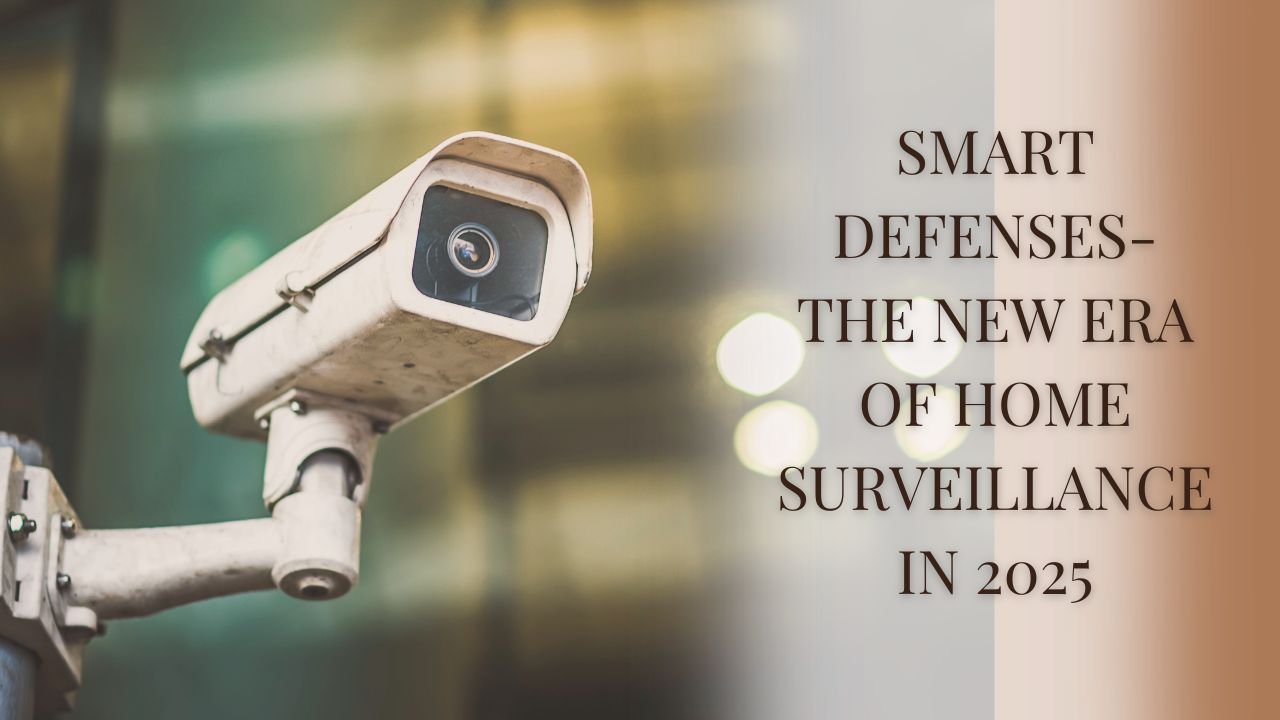The year 2025 marks a major transformation in home surveillance technology. Gone are the days when security cameras simply recorded video footage.
Now, modern systems combine AI-powered detection, smart sensors, and real-time analysis to prevent incidents before they happen.
Home security cameras can now distinguish between people, vehicles, pets, packages, and even flames or smoke, sending precise alerts directly to your smartphone.
These systems use on-device artificial intelligence (edge AI) to analyze footage instantly without relying heavily on the cloud.
The global smart home security camera market is expected to reach nearly $10 billion in 2025 and could triple by 2035, showing how quickly households are adopting this technology.
Likewise, AI-based video surveillance is projected to grow by over 20% annually, reflecting demand for smarter, safer, and more efficient systems.
Big Trends Shaping Home Surveillance in 2025
1) Edge AI for Faster and Private Alerts
Modern surveillance systems are shifting from cloud analysis to edge processing, meaning the camera itself handles most of the data analysis. This reduces lag, minimizes dependence on internet speed, and enhances privacy.
Edge AI allows devices to recognize behaviors such as loitering, package theft, or abnormal movements, providing faster alerts and fewer false alarms. High-end models in 2025 now combine radar sensors, motion detectors, and thermal imaging to deliver more reliable results.
The best part? Even if your Wi-Fi drops temporarily, local AI keeps your system running and saves important video clips directly to your storage device.
2) Smarter AI That Truly Adds Value
In the past, smart cameras often overwhelmed users with unnecessary notifications. But the latest systems in 2025 use intelligent motion filtering to send only important alerts.
Cameras can now automatically pan, tilt, and zoom (PTZ) to follow suspicious movements. Some even have flame detection for early fire warnings and noise-cancelling two-way audio, so you can speak clearly to visitors or intruders.
Modern systems also feature dual-band Wi-Fi (2.4GHz + 5GHz) and improved apps that allow you to lock doors, switch lights, or call emergency services directly from the alert screen.
3) Subscription Plans vs. Local Storage
A major trend in 2025 is the ongoing debate between subscription-based monitoring and local storage.
Many companies offer AI-based detection, extended video history, and 24/7 cloud recording through paid plans that range between $8–$20 per month. However, more users are now choosing local storage options such as microSD cards, network video recorders (NVRs), or secure home hubs to avoid recurring costs.
Experts recommend selecting a hybrid system that supports both cloud and local backup, ensuring you never lose footage even if one method fails.
4) Rising Standards for Privacy and Security
As AI technology grows, so does the need for privacy. In 2025, new regulations are pushing companies to become more transparent about data collection, storage, and algorithm usage.
Many countries have started introducing AI compliance frameworks, encouraging manufacturers to design products with privacy shutters, data encryption, and clear update policies.
Before buying a new device, make sure the manufacturer guarantees regular software updates and offers secure logins with two-factor authentication.
5) Connectivity Upgrades to Watch
The introduction of Wi-Fi 7 technology in 2025 is making home surveillance smoother than ever. This next-gen standard reduces lag and handles multiple high-resolution cameras effortlessly.
Additionally, the new Matter smart home standard continues to evolve, allowing better interoperability between brands like Google, Amazon, Apple, and Samsung. However, not all cameras support it yet, so always check compatibility before investing in a system.
Feature and Pricing Snapshot (2025)
| Feature Concern | What’s New in 2025 | Why It Matters |
|---|---|---|
| Detection Accuracy | On-device AI for people, vehicles, pets, and flames | Reduces false alerts and improves accuracy |
| Night Vision | Full-color vision with LED floodlights | Clear visibility and stronger deterrence |
| Tracking | PTZ cameras with smart auto-tracking | Fewer blind spots and better evidence |
| Storage Options | Local NVR + cloud hybrid support | Protects footage even if internet fails |
| Subscriptions | Transparent pricing and flexible plans | Helps control long-term costs |
| Power Options | Solar charging, wired, or hybrid setups | Reliable and eco-friendly operation |
| Privacy Tools | Built-in shutters and encryption | Protects indoor privacy and data |
| Connectivity | Dual-band Wi-Fi and early Wi-Fi 7 support | Ensures stable connections for all devices |
Building a 2025-Ready Security Setup
- Identify Key Zones
Focus first on entry points — front door, garage, driveway, and backyard. Install PTZ or wide-angle cameras to cover open areas, and smaller cameras for indoor monitoring. - Use Mixed Power Sources
Combine wired cameras for 24/7 recording with solar or battery-powered cameras for flexibility in areas without outlets. - Customize Your Alerts
Use app-based tools to create motion zones and enable object-type alerts. This ensures you receive only relevant notifications, reducing distractions. - Plan Storage Wisely
If you want long-term video history or advanced AI features, a paid plan may be worth it. Otherwise, local microSD or hub-based systems can save money while keeping your footage secure. - Secure Your Network
Use WPA3 encryption, unique passwords, and enable two-factor authentication. For extra safety, create a separate Wi-Fi network for IoT devices. - Check for Regular Updates
Always buy from brands that publish their firmware update policy. This guarantees your devices remain safe against new vulnerabilities.
Typical Costs in 2025
- Cameras: $90–$200 each for most 2K or 4K smart cameras.
- Solar Add-ons: $30–$60 for solar power kits.
- Smart Hubs/NVRs: $120–$300 depending on storage capacity.
- Subscriptions (Optional): $8–$20/month for extended cloud history and AI alerts.
Overall, a complete 4-camera smart setup with local backup and Wi-Fi 7 compatibility can cost around $700–$1,000, depending on the brand and features.
Quick Buyer Checklist
- On-device AI for smarter, faster alerts
- Color night vision and HDR for better clarity
- Privacy shutter for indoor cameras
- Dual-band Wi-Fi or Wi-Fi 7 support
- Local storage or hybrid backup
- Transparent subscription options
- Regular software and firmware updates
Home surveillance in 2025 is smarter, faster, and more privacy-focused than ever before. With edge AI, real-time analytics, and secure hybrid storage, today’s systems go beyond monitoring — they actively prevent risks.
When choosing your setup, think long-term: invest in future-ready devices that support local processing, Wi-Fi 7, and automatic updates. Combine wired reliability with solar-powered flexibility, and balance AI convenience with data security.
With these smart defenses, homeowners can enjoy 24/7 peace of mind, knowing their properties are protected by technology designed for the modern age.
FAQs
Do I need a subscription for advanced AI alerts?
Not necessarily. Many cameras now offer on-device AI for basic alerts like person or vehicle detection. However, cloud subscriptions provide longer video history and 24/7 continuous recording.
Is Wi-Fi 7 essential for home security systems?
No, but it’s beneficial. Wi-Fi 7 improves stability and reduces lag for multiple 4K cameras. If you have several devices or plan to expand, Wi-Fi 7 is worth considering.
How can I protect my camera data from hackers?
Use strong passwords, two-factor authentication, and ensure all devices are updated regularly. Avoid sharing your home network and consider local storage for sensitive footage.




